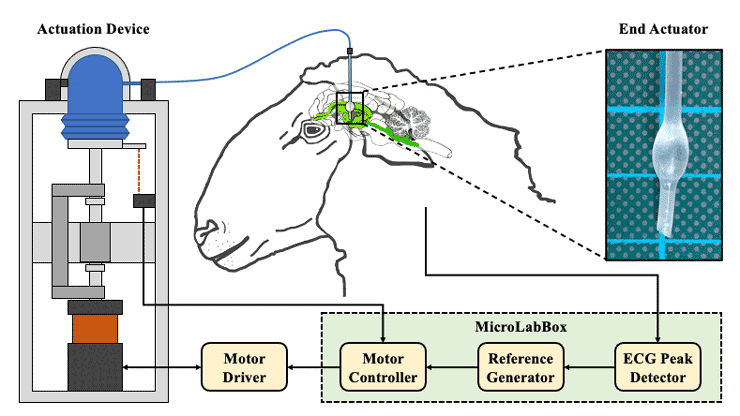The intracranial pressure (ICP) affects the dynamics of cerebrospinal fluid (CSF), and its waveform contains information that is of clinical importance in medical conditions such as normal pressure hydrocephalus. Active manipulation of the ICP waveform could enable the investigation of pathophysiological processes altering CSF dynamics and driving these conditions. This study expands previous work on intracranial pulse pressure amplification by developing a dedicated soft robotic actuator system for in vivo modelling of normal pressure hydrocephalus.
The proposed soft robotic actuator system consists of a soft robotic end actuator and a hydraulic actuation device. Different soft robotic end actuators were designed for intraventricular implantation and manufactured by applying cyclic tensile loading on the soft rubber tubing. Their mechanical properties were investigated, and the type that achieved the largest pulse pressure amplification in an in vitro simulator of CSF dynamics was selected for the in vivo application. The accompanying hydraulic actuation device was based on a linear voice coil motor and designed to enable automated and fast operation of the end actuators. The combined system was validated in an acute ovine pilot in vivo study.
The in vitro results show that variations in the used materials and manufacturing settings altered the properties of the soft robotic end actuator such as the pressure-volume characteristics. The in vivo results show that the introduced soft robotic actuator system is capable of ICP waveform manipulation. A cardiac-gated actuation volume of 0.125 mL at a heart rate of 62 bpm caused an increase of 205% in mean peak-to-peak ICP amplitude but only an increase of 1.3% in mean ICP. Continuous amplification of the intracranial pulse pressure could enable in vivo modeling of normal pressure hydrocephalus and shunt system testing under pathophysiological conditions to improve therapy for hydrocephalus.

